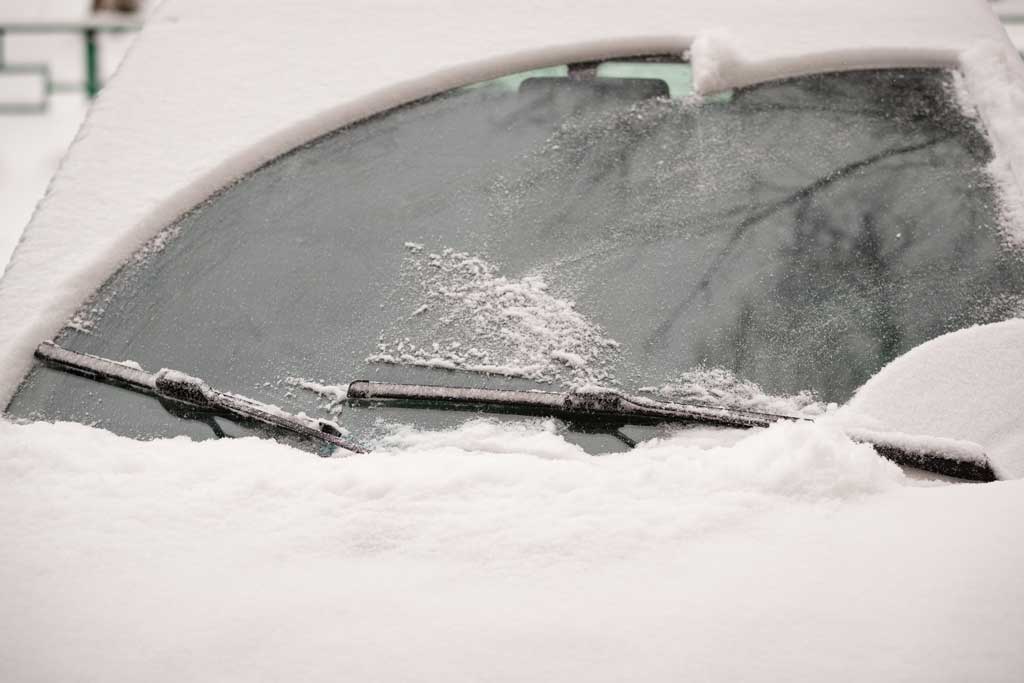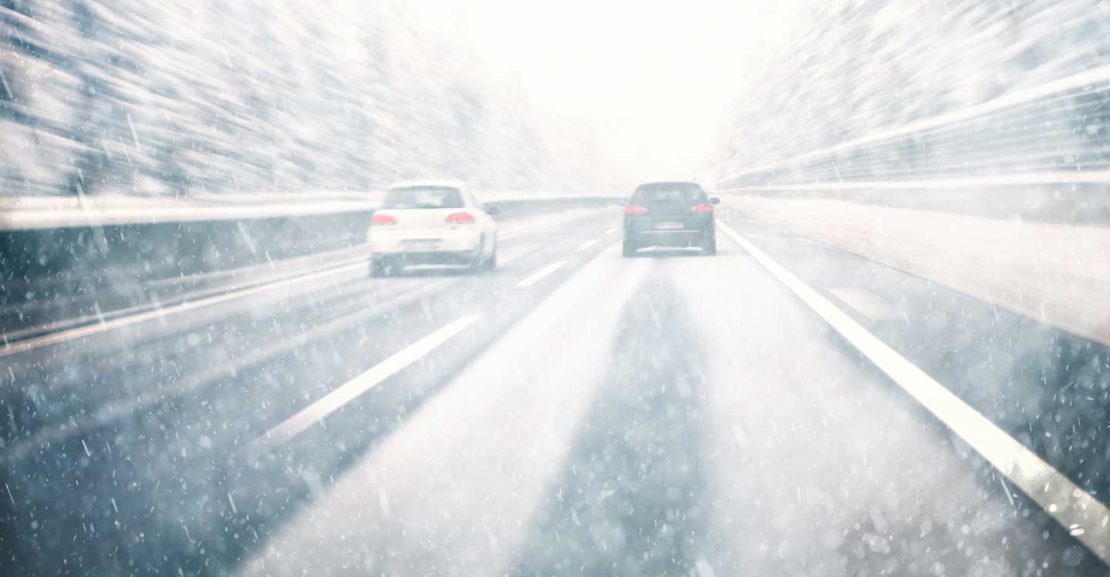Ready to Be a Winter Road Warrior?
Winter weather is just around the corner. From relentless snowfalls to frigid temperatures, St. Louis winter conditions can be grueling, especially out there on the road.
Staying safe at home during bad winter weather might be easier for some this year thanks to remote work, virtual school, and home delivery services, but avoiding all travel during an extended weather event is almost impossible. Whether it’s just a quick trip to QT, your normal work commute, or a full-on trek across the city (or even beyond!), most of us will have to deal with driving on wintry roads at some point.
We want you to be safe out there.
As automotive experts, that’s kind of our “thing” here at Master Auto Repair of Webster Groves. We don’t just care about vehicles. We care about drivers. And we see a lot of drivers out there struggling to get around safely in the snow, cold, and ice. On top of the typical winter concerns, the car industry, just like most industries today, is experiencing a shortage of essential parts. So, it’s more important than ever to get your car prepared for winter as soon as possible before you find yourself stranded.
We have compiled a list of the most important tips and factors to keep in mind to prepare your car for winter if you have to hit the road during a winter storm.
Winterize Your Vehicle
Winterizing vehicles in St. Louis is a little bit different than in some other parts of the country. It’s because our winter weather typically comes in multiple waves over a longer period of time. The first wave usually happens earlier in the fall, in November or even October.
Drivers often treat the arrival of this first wave of snow or sleet as their cue to winterize their vehicle, Master Auto Repair of Webster Groves is there to help with some of the essential winter preparation such as:
- Installing fresh wiper blades
- Filling washer fluid reservoir with proper mix
- Making sure tires have at least 5/32” of tread
- Filling all tires (including the spare!) to proper air pressure
- Evaluating windshield, rear-window, and mirror defrosters
- Performing appropriate testing on your battery
- Gauging the integrity of the cooling system operation and fluid level
- Inspecting brakes
- Assessing belts and hoses
- Taking care of all necessary repairs and any normal routine/preventive maintenance services
If we’ve had severe low temps and abundant frozen precipitation like last winter, your wipers and battery have worked overtime. Batteries should be tested and windshield wipers inspected again to ensure continued safety through the “back 9” of our long St. Louis winters. Even in perfect driving conditions windshield wipers are prone to nicks and tears and will need to be replaced after a surprisingly short period of time.
Lori’s Words of Wisdom:
All of us almost always need new wiper blades! We just don’t think about it until it’s a problem. We recommend that you have your wipers replaced as part of your vehicle maintenance routine at least twice a year.
Take Care of Repairs and Maintenance
Many people don’t think about how truly dangerous it can be when your car breaks down in below freezing temperatures. AAA might be just a call away, but the tow truck is a different story. Typically, in the best of circumstances, tow truck wait times in the metro area are around 45 minutes, but during winter weather events it can be twice as long due to slower travel and a surge in calls for roadside assistance and towing.
If for any reason your car stalls and won’t re-start, or if it’s not safe to keep it running, you’re not going to have heat! Your blower will probably blow, but as soon as the temperature of the engine drops, the blower will be blowing cold air!
Routine vehicle evaluations and keeping pace with maintenance recommendations are key to preventing a breakdown. Angie and Lori can make this easy with a concise consultation and subsequent scheduling of three visits per year. We’ll text your reminders, we’ll loan you a car if needed, and we’ll lay out the plan. We intend to make your visits easy, efficient, and enjoyable!
Be Prepared for the Worst
An hour might not seem like much time when you’re cozied up safe at home reading a book or scrolling through Netflix. That same hour can feel like an eternity on the side of the road. Even if you’ve taken all the precautions and are confident in your vehicle and driving skills, you need to be prepared for the worst. That means preparing a winter safety kit to keep in your vehicle. Not only could it be vital to your survival, but it might make a less dire situation a lot more comfortable for you. You never know how long you may be stuck out in the cold, it’s better to be safe than sorry!
Here’s what Lori from Master Auto Repair of Webster Groves recommends to keep in your vehicle’s winter safety kit:
- Box, bag or basket for storage
- Warm blanket
- Snow gloves
- Winter hat
- Slip-on boots, ideally mid-calf height to protect your feet from deep snow drifts
- Hand warmers
- Small shovel
- Ice scraper
- Broom (works great as an alternative to a scraper brush for removing snow from large vehicles such as a minivan)
- Consider carrying multiples of items like blankets, gloves, hats, and hand warmers if you often travel with passengers
Clear Your Windows
Before you hit the road in your winterized vehicle packed with your winter safety kit, you will need to do one of the most dreaded winter chores – clearing your windows. Notice we said “windows”, not “windshield”. Every window on your car should be completely cleared of snow and ice to ensure proper visibility and awareness of what is happening around you.
Don’t use your wipers to clear snow and ice off of your windshield or rear window! Let the heat from your defrosters loosen its icy grip on your glass, then use your scraper, brush, or broom to remove the snow and ice. While you’re at it, make sure your mirrors, light covers, license plate, and camera sensors are cleared off, too. Sometimes the well that your wiper blades rest in freezes over, so make sure your wipers are free and not frozen in place before you turn them on. You should also remove excess snow from your roof, hood, trunk lid, bumpers, as well as your truck bed or trailer if applicable. You don’t want that snow blowing off or breaking loose and bombarding other vehicles behind you on the road. This is especially important when we’ve had ice — a chunk of ice to the grill or windshield at 60MPH could leave significant damage or even cause an accident. Don’t be “that guy”!
Be honest — is this you?

Clearing your windows off completely isn’t just good for your safety and the safety of other drivers around you. It can also protect you from expensive windshield wiper repairs. Running your wiper blades over chunks of ice stuck on your windows is a quick way to tear that delicate rubber and leave your views obstructed or smeared. The wiper arms are also vulnerable to loose or lost fittings and breaks.
Wiper blades and wiper arms are usually easy, inexpensive repairs, but mechanical repairs are more expensive. The wiper arm connects to a mechanical assembly with a motor and transmission. This assembly includes a lot of gears and other parts, many of which are often made of plastic. Plastics can become more brittle during cold weather. Snow, ice, or any similar debris on the windshield creates resistance that puts strain on the wiper mechanics. This can put added wear and tear on those parts or even break a gear tooth. The minimum repair cost for a damaged wiper motor or transmission is upwards of $250.00. Fortunately, both the motor and the transmission rarely go bad at the same time.
You do not want to be caught without working windshield wipers in bad weather! For the cost of a fresh set of blades and just a bit more time spent clearing your windows, you could avoid a much costlier repair.
Know What to Do When You’re Stuck In the Snow
Getting stuck in the snow when you’re on your way to work is scary and frustrating. We all know that sinking feeling when you press the gas, hear or feel your tires spin, but go nowhere. Here’s what to do if your vehicle gets stuck in the snow.
Stuck in a flat surface?
If you get stuck on a flat surface like a parking lot or driveway, it is recommended to move at a very low speed to maneuver your way out. Most of the time you can get your vehicle out by repositioning your tires, but if you’re unable to move forward, you should hit the brake and put the car in reverse. Slowly move backward a foot or so, then put the car in drive to see if the vehicle will roll forward without pressing the gas. If so then give it a little gas and try to continue moving forward. You may have to reverse and retry a couple of times as you get your tires to find a different, non-slippery surface.
Stuck on a hill?
Things get a little scarier when you get stuck on an incline — for example, a hill on Watson Road or Chippewa Street. If your tires are spinning and there is traffic around you, you might not have room to back up much, but you may be able to roll back a little bit. In the worst case, wait for the traffic around you to clear and then take your opportunity. It is always better to try than give up and leave your vehicle. Remember — less is more. A light touch on the accelerator is key when you’re stuck. Making the tires spin will often get you even more stuck. Sometimes no acceleration works, where you’ll just let the slight momentum from the engine idling in Drive or Reverse move you forward or backward.
Are You and Your Car Prepared for Winter?
Prepare your car for winter to avoid being stuck in a cold and dangerous situation, and schedule an appointment with Master Auto Repair of Webster Groves! We’re your local shop that you can trust to do any maintenance with care and detail to make sure your car is safe and lasts.
Call (314)-843-0090 or visit us online to schedule an appointment today, and most importantly, stay safe and warm this winter season!

